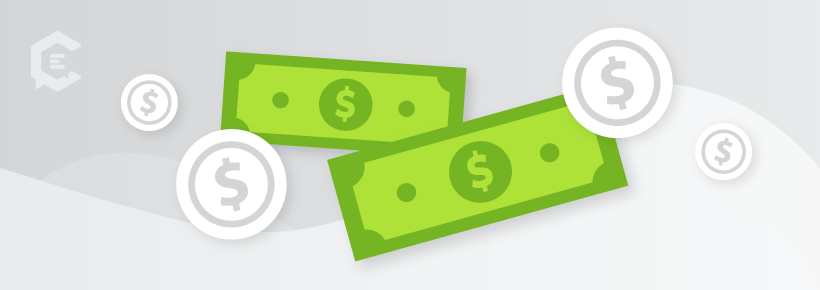Anyone who works as a consultant or agency partner for multiple clients has had the “red flag” conversation many times with peers — where you discuss the early warning signs that a client relationship is going to be difficult and possibly not sustainable.
But what about “green flags” that signal a client relationship is going to be great and long-lasting? Why are we not as preoccupied with identifying them and tracking how they play out in a business relationship? This was a question someone recently brought up in a creative professionals’ Facebook group I’m in, and it’s a smart one to unpack if you’re going after new business.
Why do people obsess over red flags and not green flags?
Red flag conditions and the conversations around them happen before contracts are signed — often before the first meeting, in fact, and continue to be analyzed throughout a client relationship and sometimes long after it’s ended.
Should we walk away from a project before it starts because the client’s already lowballing/disrespecting, or should we set boundaries/budget initially and hope we can manage the situation? Should early red flags around communication or work styles be counted like “strikes” in baseball? (One, two, three and game over.) Can red flags be a fluke?
And in hindsight, after the business relationship has ended, we often remember the red flags that were ignored and wish we hadn’t made that call.
A Harvard Business Review article about identifying and navigating red flag conditions referenced psychologist Gary Klein, whose research proved that “our brains leap to conclusions and are reluctant to consider alternatives.” Thus, the article explained, even the most intelligent people analyze a situation using pattern recognition and arrive at a decision to act or not by using emotional tags. They unconsciously do this instead of taking a textbook analytical/comparative approach.
If human brains leap to conclusions when trying to figure out red flag situations, then they slide into a comfortable and less vigilant pattern in a green flag situation: All is well. The relationship is good. Things are working. And what I find the most obviously emotionally led conclusion: This is how things are supposed to be.
Things in the universe of human relationships are not supposed to be any certain way, and certainly the best-case scenario is not the baseline. It’s definitely something to strive for, however.
5 Green flags that indicate a great client relationship:
1. A client who offers multiple payment options and lets you choose the most convenient.
We work because we need to get paid. Regardless of whether we love the work or are huge believers in the project, the essential need to be compensated in order to pay one’s bills remains. A client who prioritizes your need to get paid, and proactively seeks out the most convenient way to get you paid, is one who understands that your needs are as important as their own.
Also in this category: a client who worries about getting your PO/retainer/paperwork processed before they start sending you work.
Monitoring this green flag: Sadly, sometimes a client’s initial enthusiasm to set you up in the payment system disappears at exactly the moment you turn in the completed work. Suddenly it becomes, “We’ve never used your preferred payment app before,” or “Our accounting person says you actually need to do X, Y, Z.”
If this is quickly resolved, i.e. you find another payment process you both can agree on, then that’s another green flag. If you find yourself chasing payment for several weeks, it flips completely into a “walk away now” situation. It means the client is only pretending to care about your needs till they get what they need.
2. A client is happy with your case studies and capabilities deck, or your samples and CV — and is not asking for any free work, particularly any strategy/planning work.
The conundrum of how to pitch for a project and prove that you’re better suited than your competitors without giving away too much of your creative IP is never-ending. Professional consensus is, showing your portfolio and/or case studies is the safest way to show what you are capable of without doing free work for someone who’s not even a client.
And many companies will still ask for specific ideation, a plan, a sample piece. The ones who can make a decision to move forward — even if it’s for a small paid test project — without asking for unpaid labor are “green flag” clients because they’re not asking you to do anything that feels uncomfortable or extra.
3. A client introduces you to the team, and the team is friendly.
I just got added to a new client’s Slack channel, and several people on the team welcomed me with friendly emojis and GIFs. I took this as an excellent sign, even though adding an emoji to a Slack message requires less than 2 seconds of effort.
The reason I noticed was that I had just had a disappointing experience with another client, wherein the content director added me to a Slack channel and then each of the subeditors proceeded to ignore my introduction and all my optimistic attempts at conversation. We didn’t need to be in the same physical office for me to know what their silence meant: They didn’t welcome me. Predictably, they also ignored my ideas, and eventually dropped me from the team in favor of people they’d worked with before.
While the emoji-sending new team doesn’t know me, their quickness to acknowledge and greet me was a green flag that they’re open to getting to know me. It also required very little emotional effort on my part: I introduced myself, they said hello.
(Colleagues responding to you the first time you reach out is also a green flag, though we all wish it were a norm.)
4. The client is prepared with all the materials and time needed to onboard you to the project.
If you’re used to a field like publishing or startups, it becomes normal (although still extremely annoying) for projects to begin without any kind of handover of assets having taken place, and for the new client or PM to just fire things haphazardly over to you without any plan or brief. In fact, it’s equally common that they expect you to come up with the plan and then tell them what you need.
Things can get done under these circumstances, but it typically requires false starts, revisions, and frustration on both sides.
Conversely, when a client starts out by organizing and delivering materials relevant to the project, creating a brief, and scheduling a phone call to go through everything, it’s a big green flag. It signals that they’re going to take equal responsibility in making sure this gets done right.
5. The client is proactive about putting you on a retainer or contracted monthly rate.
This may not happen immediately, and I am in the camp that thinks it’s fine if a client wants to start with a small project or a few test pieces and then decide whether to scale up/sign a long-term project. Some agency owners or consultants require long-term contracts from the get-go, but ultimately if someone isn’t happy and wants to walk, they will.
It often feels like more of a natural, organic progression for a client to be happy with the first pieces of work and ramp-up to become a steady “anchor client.” If they initiate this transition with a satisfactory dollar figure attached to the request for steady hours, then that’s two green flags at once.
Red flags can promote poor mental health – consider green flags as the opposite
At the very outset, if spotting red flags in the context of your options allows you to assess each option and choose the best outcome, then red flag obsession can be helpful. If it just triggers an emotion and you act out an old pattern, then it’s not. When you do it endlessly without finding a preferable path, then it’s more of an addictive loop of self-doubt and second-guessing one’s decisions.
When Florida State University researchers published a paper on the negative mental impacts of chronic second-guessing, the psychology journalism world was quick to pick up on it. The paper was covered in Science Daily and many other publications with the headline, “Second guessing one’s decisions leads to unhappiness.”
When something is easy and streamlined, by contrast, we don’t overthink it as much. We don’t second-guess at all. But maybe we should examine these situations a little bit more, instead of jumping to the conclusion “This is how things are supposed to be.”
Ultimately, green flags lead to the best-case scenarios, and therefore those are what you really want to seek out, recognize, and cultivate more of in your career.






